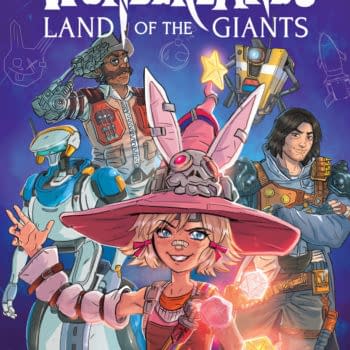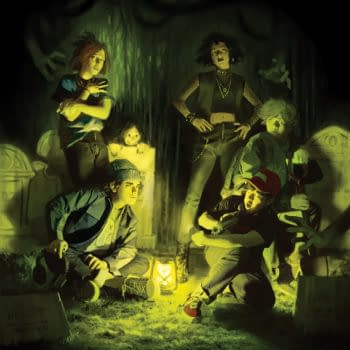Posted in: Comics, san diego comic con | Tagged: david marquez, kris anka, Marvel Comics, sdcc, SDCC '15, tom brevoort
Breaking Into Comics The Marvel Way At SDCC '15
Senior VP of Publishing at Marvel Comics and Rich Johnston's best friend Tom Brevoort introduced the panel, including Invicible Iron Man artist David Marquez and Captain Marvel artist Kris Anka.
"The first and best piece of advice we can give you," said Brevoort. "Doing stuff for Marvel can be A goal, but probably shouldn't be THE goal. You should want to make comics." Just wanting to write or draw Spider-Man isn't helpful. "You have to be able to do everything before you can do one specific thing."
There's an oft-quoted remark he attributes to Devin Grayson. "In the world of comics, when someone figures out a new way to break in, we immediately bored that door up and someone has to find a new way in. What works for one person won't necessarily work for every person."
He then turned the panel over to the artists, who have seen significant boosts to their profiles in the last few years.
It's Marquez' 10 year anniversary at San Diego. He was an animator for A Scanner Darkly in 2005, visiting the con and made some contacts. He met C.B. Cebulski, talent scout for Marvel. He used his free time to create pages. He published something with a small publisher and continued to send work to CB. He did a fill-in on Secret Warriors, which lead to more work with the company.
What did it take? "Lots and lots of dedicated hard work and making comics to learn how to make comics."
Brevoort mentioned "making comics beyond Marvel comics." He said that the internet is a distribution platform to be taken advantage of by anyone. "It is literally a different world from the days when I started."
Brevoort says to get feedback from people who don't know you is better than going to friends and family.
"You don't need permission to make comics," Marquez said. "If I was just going to San Diego every year trying to get into comics, I'm getting drowned out." The internet is vital.
"I would be one of those internet babies," Anka said. "I was doing a portfolio in a backwards way. I had been drawing Marvel fan art for years and posting it online." He was going to school for animation and making films. "I had ten years worth of Marvel characters I'd drawn on the internet."
Artist Mark Brooks told CB who told Nick Lowe who finally contacted Anka. He was going to school, so he couldn't do work beyond covers for Marvel. He began working for the Ninja Turtles cartoon after school, but Lowe relentlessly recruited him.
"It's about getting the work in front of the editor's eyes. And there's different ways to do that." Marquez said. "Editor's resonate more with, instead of your talent, they can see that you work."
Brevoort added, "It's not just about breaking in, it's staying in. It's a difficult gig. There are some people that are just not ready to do this. Everybody that's in the business is working to get their next assignment. And everyone at this big enormous convention center is waiting for their next assignment. That's your competition."
"There's talent, luck and persistence, but you only need two of them," Marquez added. "You never know which mix you'll be. So always be making opportunities for yourself. Do the work. Get out in front of people and network."
Brevoort opened the panel to questions, and the first person to ask mentioned the structure of Marvel comics and whether writers were forced to hit certain beats in the script.
The editor said that notion is false, but stressed that every book should maintain its identity. A Daredevil comic shouldn't read like an X-Men comic and vice versa.
An aspiring artist what's the best way to get his material out there, and if an agent would help him achieve that. Brevoort said that it depends on the agent, he's seen some that get people work and others that don't deserve a paycheck. Marquez said the best portfolio is a published book.
Another questioner wondered if Marvel prefers writers who live and breathe the characters or if a new, unique voice is more important? Brevoort said there's no one answer to that, but most of the successes have a combination of both aspects.
Marquez talked about his routine and how he has to schedule time to get work done. "If I just waited until I got the feeling to draw, stuff would never get done." It's a job.
Brevoort was challenged to tell his break-in story.
"This was back in the day when we made stone comics with chisels," he joked. He went to school at the University of Delaware. His senior year, he was expected to do an internship. He heard about Marvel doing an internship and sent a letter of inquiry. He was hired in the summer of 1989, and at the end of his stint he was brought on as an assistant editor.
What advice would you give to your teenage self?
Brevoort: "Cut down on the sugar!"
Marquez: "Be ready for a long slog."
Anka: "Don't be your idols, bury your idols."











